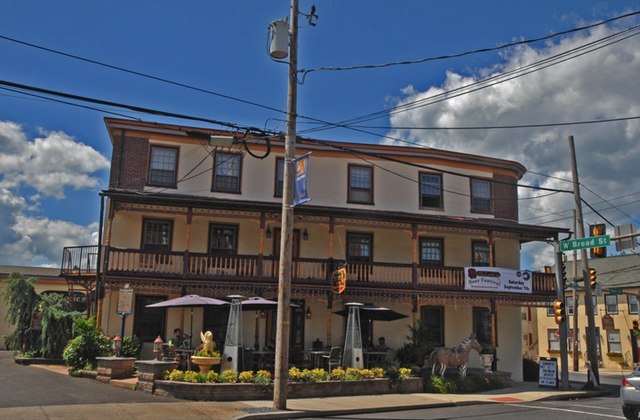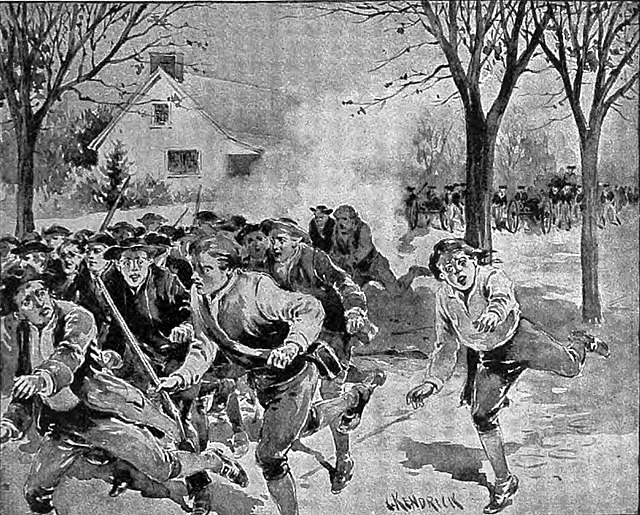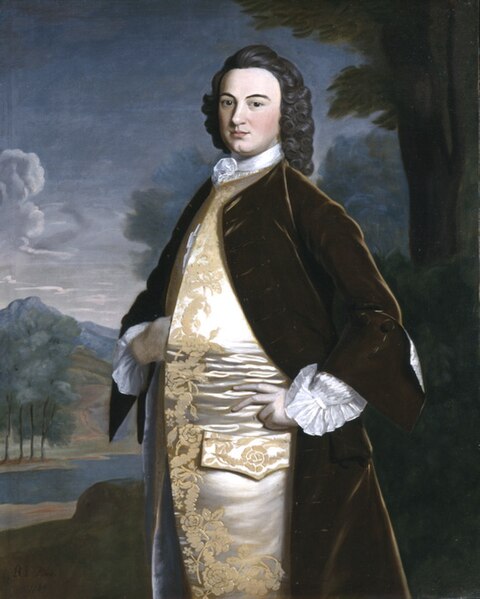Fries's Rebellion, also called House Tax Rebellion, the Home Tax Rebellion and, in Pennsylvania German, the Heesses-Wasser Uffschtand, was an armed tax revolt among Pennsylvania Dutch farmers between 1799 and 1800. It was the third of three tax-related rebellions in the 18th century United States, the earlier two being Shays' Rebellion and the Whiskey Rebellion. It was commemorated in 2003 with a Pennsylvania historical marker erected in Quakertown, Pennsylvania, where it first erupted.
Historical marker is in front of McCoole's, previously known as the Red Lion Inn in Quakertown, Pennsylvania, a central point of Fries's Rebellion
Shays's Rebellion was an armed uprising in Western Massachusetts and Worcester in response to a debt crisis among the citizenry and in opposition to the state government's increased efforts to collect taxes on both individuals and their trades. The fighting took place in the areas around Springfield during 1786 and 1787. Historically, scholars have argued that the four thousand rebels, called Shaysites, who protested against economic and civil rights injustices by the Massachusetts Government were led by Revolutionary War veteran Daniel Shays. However, recent scholarship has suggested that Shays's role in the protests was significantly and strategically exaggerated by Massachusetts elites, who had a political interest in shifting blame for bad economic conditions away from themselves.
An illustration of Shays's troops repulsed from the armory in Springfield in early 1787
Populist Governor John Hancock refused to crack down on tax delinquencies and accepted devalued paper currency for debts.
Artist's depiction of protesters watching a debtor in a scuffle with a tax collector by the courthouse at Springfield, Massachusetts. The insurrection was a tax-related rebellion.
Governor James Bowdoin instituted a heavy tax burden and stepped up a collection of back taxes.





